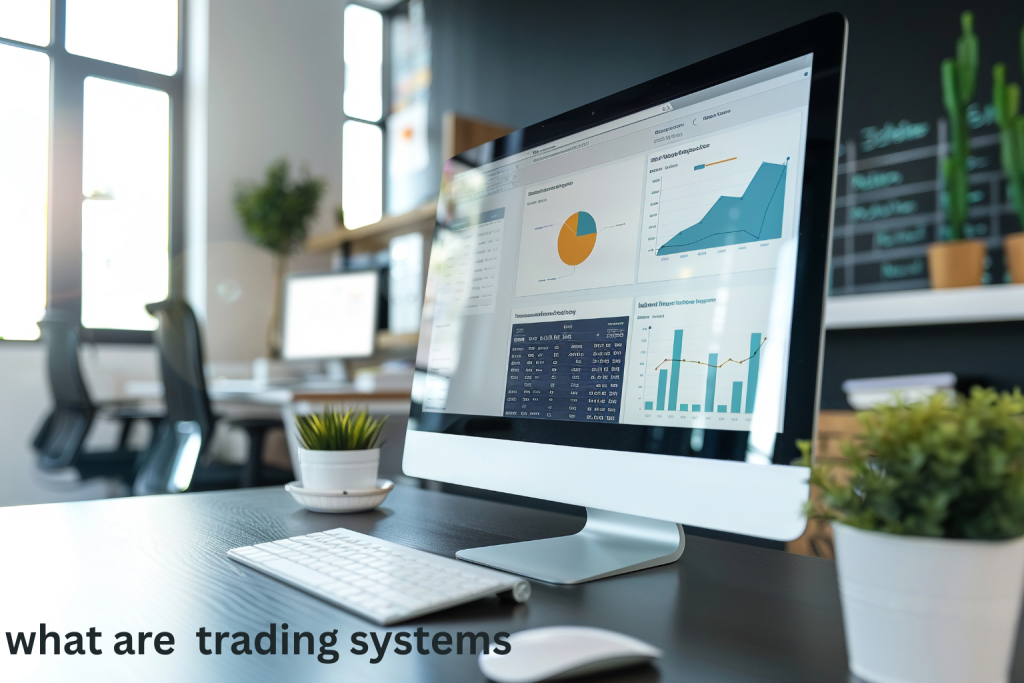What Are Trading Systems? A Beginner’s Guide to Automated and Manual Systems

Whether you’re trading stocks, forex, or crypto, you’ve probably come across the term “trading system.” But what are trading systems exactly, and why do they matter for traders?
This guide will help beginners understand the core components of trading systems, how they function, and how to choose the right one for your style.
What Is a Trading System?
A trading system is a structured set of rules and conditions used to enter and exit trades in financial markets. It can be as simple as a moving average crossover strategy or as complex as an AI-powered algorithm analyzing hundreds of data points.
Trading systems remove emotional decision-making and aim to create consistent, repeatable outcomes.
Types of Trading Systems
1. Manual Trading Systems
- The trader interprets signals and executes orders manually.
- Requires discipline and real-time attention.
- Common with discretionary or chart-based strategies.
2. Automated Trading Systems (Algo Trading)
- Rules are coded into software that automatically places trades.
- Fast and emotion-free, ideal for high-frequency or systematic traders.
- Can run 24/7 depending on the platform.
Core Components of a Trading System
| Component | Purpose |
|---|---|
| Entry Rules | Define when and why a trade is opened |
| Exit Rules | Decide when to close the position (profit or loss) |
| Risk Management | Set position size, stop-loss, and target levels |
| Indicators & Signals | Use tools like RSI, MACD, or moving averages |
| Backtesting | Test system performance on historical data |
| Execution Method | Manual or automated placement of trades |
Benefits of Trading Systems
- Consistency: Removes emotional bias from decisions
- Efficiency: Faster trade execution with automation
- Scalability: Can be tested and applied to multiple assets
- Trackable: Easy to analyze performance metrics
- Discipline: Encourages rules-based trading
Popular Trading System Examples
- Trend-Following System: Uses moving averages to trade with the trend
- Breakout System: Trades on breakouts above/below support/resistance
- Mean Reversion System: Buys/sells when price returns to average
- Scalping System: Executes multiple small trades for quick profits
- Grid System: Places layered orders to profit from ranging markets
How to Build a Basic Trading System
- Choose Your Market – Stocks, forex, crypto, or futures
- Define Strategy Logic – Based on indicators or price action
- Set Entry/Exit Rules – Include risk/reward parameters
- Backtest Your System – Use historical data to evaluate
- Demo Trade First – Test live without real money
- Go Live and Track – Keep improving based on results
Final Thoughts
Understanding what trading systems are is essential for anyone serious about improving their trading results. Whether you’re developing your first strategy or considering automation, a well-defined system is the backbone of disciplined, successful trading.
FAQs
Q1. Do I need to be a coder to use automated trading systems?
Not always. Many platforms offer drag-and-drop builders or pre-coded strategies.
Q2. Are manual systems still effective in 2025?
Yes. Many successful traders still use manual systems with strong rules.
Q3. Is backtesting always accurate?
It helps, but it can’t predict future market conditions. Always combine with live testing.
Q4. Can I buy a trading system?
Yes. Many platforms offer ready-made systems, but always test them yourself first.
Q5. How do I know if a trading system is working?
Monitor win rate, risk-reward ratio, drawdown, and consistency over time.